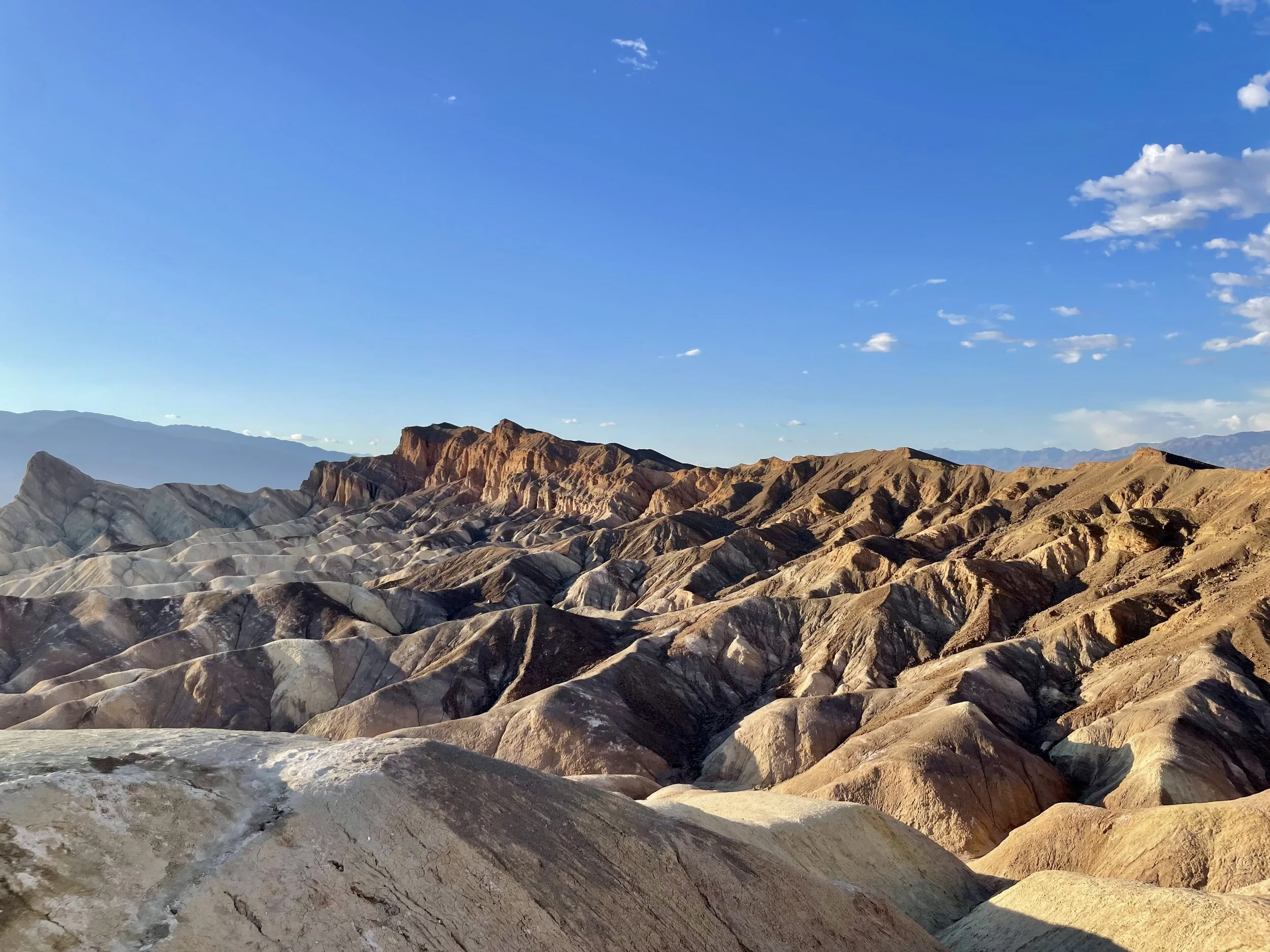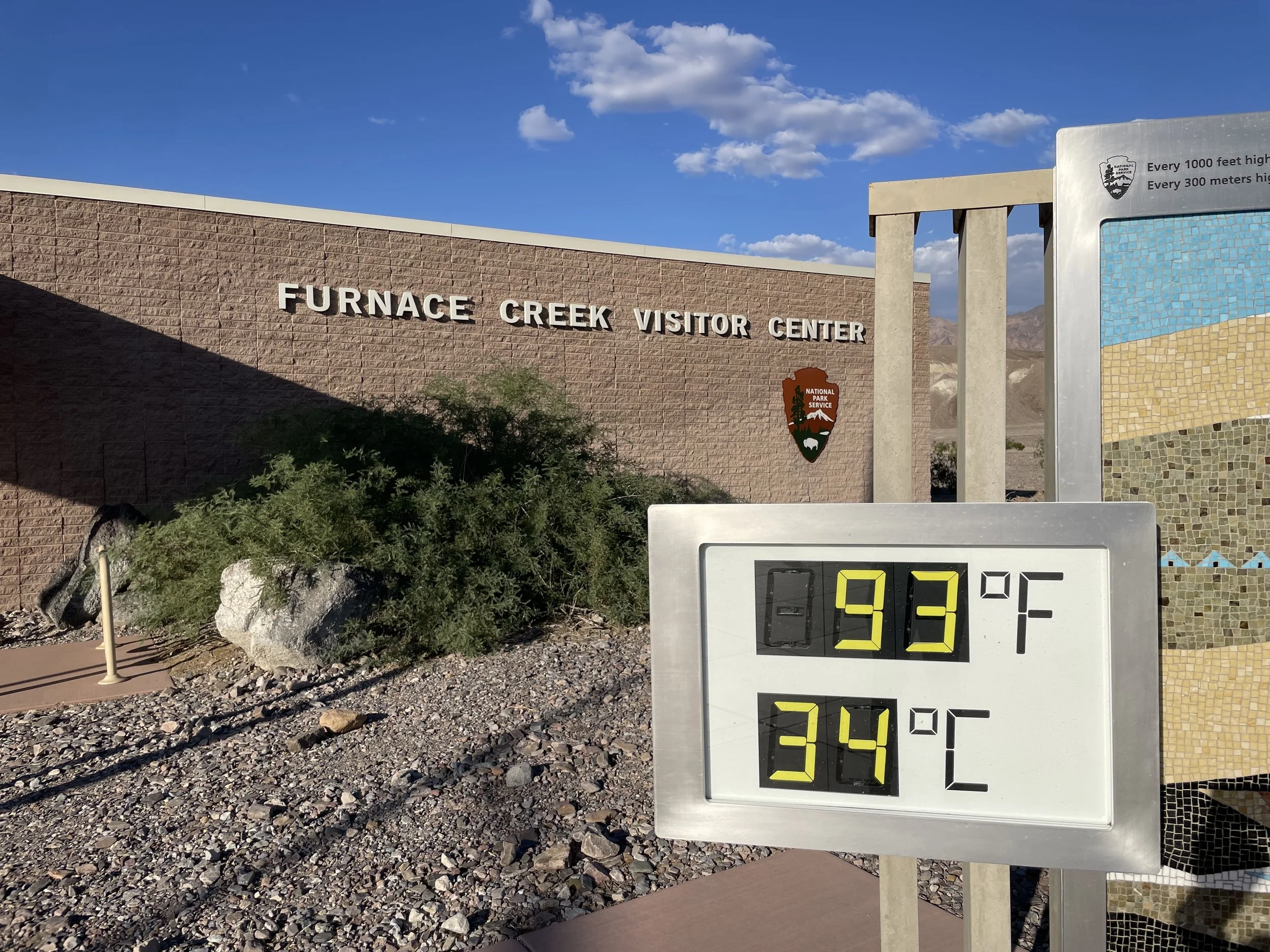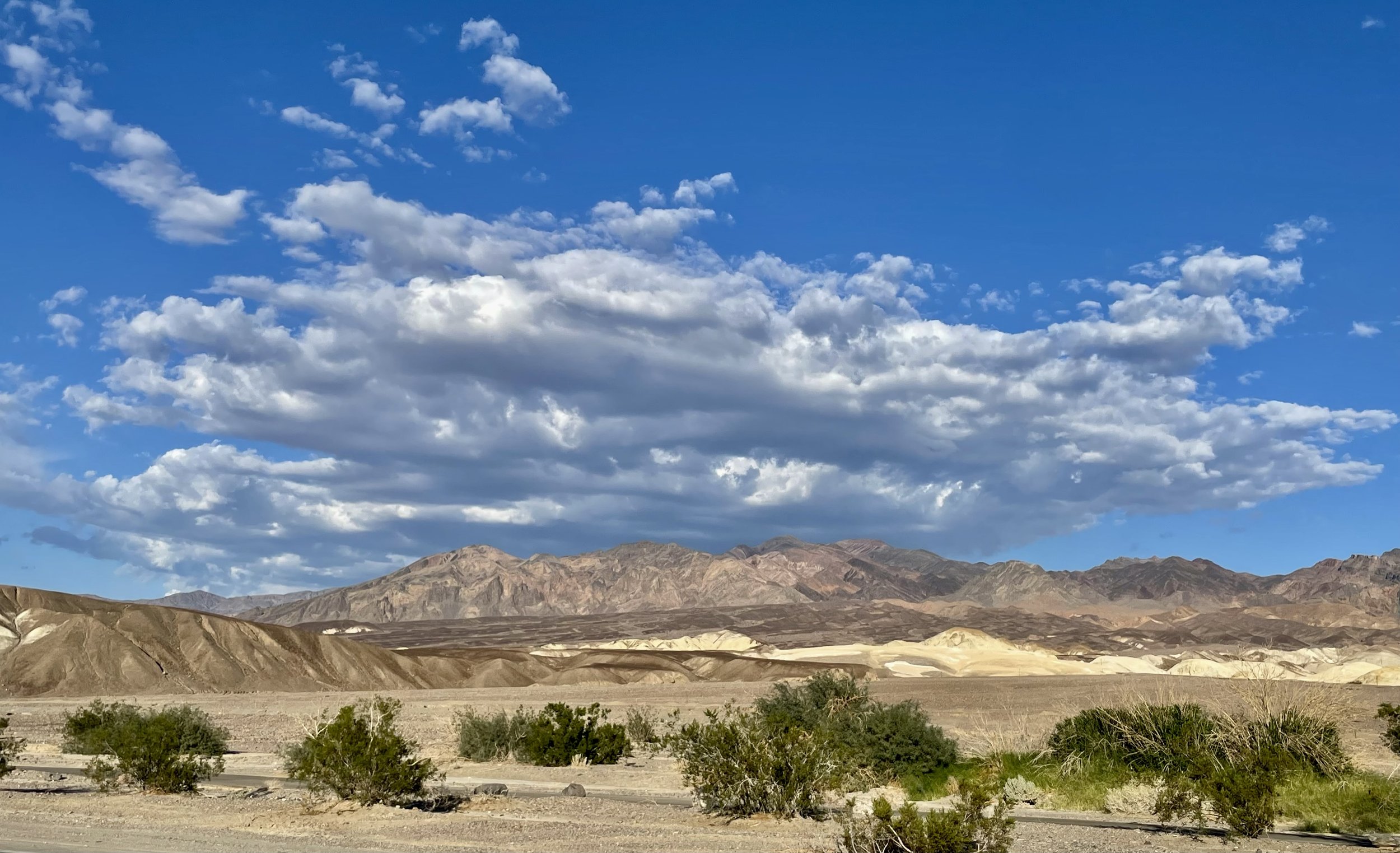#14 Death Valley National Park, California
Zabriskie Point
I arrived at Death Valley National Park on an October day in the late afternoon. Earlier that day, I landed in Las Vegas, picked up my rental car, dropped my luggage at the hotel, picked up my Dad, and off we went into the desert. The 114 miles drive from Las Vegas to Death Valley takes about two hours, making it an easy and scenic road trip. I intentionally planned my visit for the fall—there was no way I was going to brave the park in the summer. The name “Death Valley” says it all. This is one of the hottest places on Earth, and if you’re not careful, dehydration and heat exhaustion can be serious risks. From the early 2000’s to the present there has been an average of 4 deaths per year in the park.
We entered the park in California, as most of Death Valley National Park lies within the state, though a small portion stretches into Nevada. Death Valley itself is part of the larger Basin and Range Province, a vast geological region that extends across much of the western United States. It is also the largest national park in the contiguous U.S., covering over 3.4 million acres of rugged mountains, rolling sand dunes, and deep, expansive valleys.
As soon as we arrived, I made my obligatory stop at the Death Valley National Park sign, snapped a photo, and then headed straight for the Furnace Creek Visitor Center to get my National Park Passport stamp. This is also where you can check the giant outdoor thermometer, which displays the current temperature in the valley. When I was there, it was a balmy 93°F (36°C)—and that was considered mild!
A Few Facts About Death Valley National Park
• Hottest Temperature Ever Recorded: Death Valley holds the record for the highest air temperature ever recorded on Earth—134°F (56.7°C) at Furnace Creek in 1913.
• Lowest Point in North America: The park’s Badwater Basin sits at 282 feet (86 meters) below sea level, making it the lowest point in North America.
• A Land of Extremes: The valley is bordered by towering mountain ranges, including the Panamint Range, home to Telescope Peak, which rises to 11,043 feet (3,366 meters)—a striking contrast to the low desert floor.
• Ancient History: Indigenous people, including the Timbisha Shoshone, have lived in Death Valley for at least a thousand years, surviving in one of the harshest environments on Earth. Later, in the mid-1800s, gold and borax mining brought fortune seekers to the region, many of whom struggled to survive in the valley’s unforgiving conditions.
• Rare Superblooms: On rare occasions, after heavy winter rains, the desert comes alive with wildflowers, creating a breathtaking “superbloom.”
Things to Do in Death Valley
1. Visit Badwater Basin
Best for surreal landscapes and a bucket-list stop
• Walk on the vast salt flats at Badwater Basin, the lowest point in North America. The hexagonal salt formations look like another planet!
2. Watch Sunrise at Zabriskie Point
Best for stunning golden views and photography
• One of the best sunrise spots in the park, Zabriskie Point offers breathtaking views of the golden badlands and rolling hills.
3. Hike Golden Canyon & Red Cathedral
Best for an easy yet stunning hike
• This 3-mile roundtrip hike takes you through colorful rock formations to the towering Red Cathedral.
4. Explore Mesquite Flat Sand Dunes
Best for sunset and dramatic landscapes
• These wind-sculpted dunes are a great place to take photos, especially at sunrise or sunset when the shadows create amazing patterns.
5. Drive Artists Drive & Artists Palette
Best for a scenic drive with colorful rocks
• This 9-mile scenic drive takes you past vibrant hills, with mineral deposits creating hues of red, pink, yellow, and green.
6. See Dante’s View
Best for panoramic views
• At 5,476 feet, this viewpoint gives you a stunning panoramic look over the entire valley. Come for sunrise or sunset!
7. Check Out Devil’s Golf Course
Best for unique salt formations
• This jagged salt pan is so rough that “only the devil could play golf here.” The spiky formations are fascinating up close.
8. Go Stargazing
Best for dark sky lovers
• Death Valley is an official Dark Sky Park, meaning it has some of the best stargazing in the U.S.!
How to Prepare for Your Trip to Death Valley
Best Time to Visit
• Fall to Spring (October – April) is ideal, with cooler temperatures.
• Summer (May – September) is dangerously hot, often exceeding 120°F (49°C).
What to Bring
Water – At least 1 gallon per person per day. There are limited refill stations.
Electrolytes & Snacks – Helps prevent dehydration.
Sunscreen, Hat, and Sunglasses – The sun is relentless.
Proper Footwear – Hiking boots or sturdy shoes for rocky terrain.
Layers – It can be chilly in the mornings and evenings.
Paper Map – GPS can be unreliable.
Gas – Fill up in Furnace Creek or Stovepipe Wells before exploring. Rule of thumb when driving in the desert. If you have half a tank of gas, you are basically driving on empty. FILL UP!
Best Photography Spots in Death Valley
Zabriskie Point – Best for sunrise.
Badwater Basin – Unique salt flats.
Artists Palette – Vibrant colors on the rocks.
Mesquite Flat Sand Dunes – Dramatic shadows at sunrise/sunset.
Dante’s View – Best high-elevation view of the entire valley.
As always, for the most up to date information about the park visit the National Park Website.




